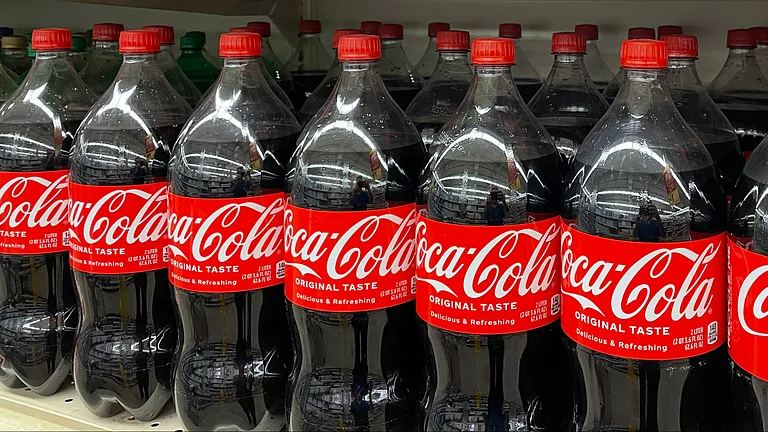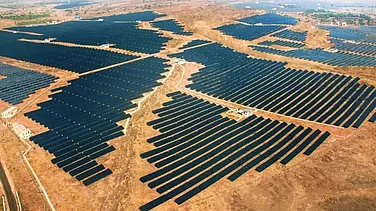The Ministry of Environment, Forest and Climate Change (MoEFCC) notified the Extended Producer Responsibility (EPR) guidelines for plastic packaging on February 16, 2022. These guidelines stipulate mandatory targets for collection, recycling, end-of-life disposal, as well as use of recycled content, and (selective) reuse by brand owners of plastic packaging introduced in the Indian market.
These guidelines direct all the manufacturers, producers, importers, brand owners (PIBOs) and plastic-waste processors like mechanical recyclers, and end-of-life disposal units like waste to energy, cement co-processing plants, waste to oil and composting units to register onto a centralised portal.
The idea of introducing EPR was to improve the accountability of businesses that place their products on the Indian market by taking responsibility of the (plastic) packaging material that is introduced in the waste-management systems of India cities. Thus, the EPR regime promoted the principle of “polluter pays” by directing the businesses to engage in critical activities of waste management such as collection, processing, disposal and reuse.
What We Found
In the last quarter of 2024, the Centre for Science and Environment (CSE), a New Delhi-based civil-society organisation, released two reports examining the implementation of India’s EPR guidelines for plastic packaging. The reports exposed significant loopholes exploited by businesses, based on interactions with stakeholders involved in implementation of the guidelines and analysing publicly available data from the Central Pollution Control Board’s (CPCB) centralised EPR portal.
The findings revealed a system that has been systematically weakened—by businesses and supported by a select group of plastic waste processors. Throughout this process, the MoEFCC remained largely passive. What emerged was a diluted version of the original policy—reshaped to serve corporate interests under the guise of environmental responsibility.
Despite the mandate provided by the guidelines for registration, no manufacturers of virgin plastics feature on the portal. These are bigger players in the upstream of the plastic value chain that are in the business of manufacturing virgin plastic polymers. The guidelines explicitly suggest that they are under the scope of the legislation, however, basic compliance such as registration for such players is completely missing.
Till August 14, 2024, the cut-off date for the CSE analysis, 41,577 PIBOs had registered on the centralised portal. 83% of the registered PIBOs are importers, 11% are producers and 6% are brand owners. The producers cumulatively have placed 65% of the plastic packaging in the Indian market, followed by 26% by the brand owners; importers despite being the highest in numbers have only introduced 9% of the plastic packaging introduced in the Indian market.
It was found that the 66% of the plastic packaging placed on the Indian market is flexible in nature which is difficult to collect and thus recycle; 25% of the plastic packaging is rigid in nature and 9% comprises the aseptic (cartonised) plastic packaging.
This shows the shift of the plastic-packaging sector from rigid (valuable) formats of plastic packaging to flexible (low value), difficult to recycle plastic waste.
Policy vs Ground Reality
The analysis revealed that the plastic-recycling sector in the country is already under capacitated to serve the unregulated flow of plastic packaging in the country—29% under capacity was observed for flexible plastic (the highest-circulated plastic), while compostable plastic recycling saw an under capacity of over 700% with just one registered plant in the state of Gujarat.
The EPR guidelines for plastic packaging implied that businesses that used plastic packaging for circulating their products had to register on the centralised portal. The CPCB, on the basis of the numbers provided by the businesses, assigns targets for collection, recycling, use of recycled content and reuse (by brand owners).
The businesses should comply by taking relevant action on the ground such as financial support for collection, transportation, storage to implementing agencies such as urban local bodies, waste management agencies and informal sector to ensure sound and scientific management of plastic waste.
Interaction with several stakeholders revealed that the EPR guidelines promote a market-driven credit/certificate-trading mechanism that does not require PIBOs to actually collect and manage plastic waste.
EPR for plastic packaging has been reduced to PIBOs simply procuring certificates from plastic-waste processors (PWPs) at throwaway prices thus reducing the liability and accountability of the PIBOs and undermining the “polluter pays principle”.
Currently PIBOs are paying less than 10% of the total cost of collecting, and channelising plastics to a PWP or recycler, especially for multi-layered plastic packaging.
Power of Polluters
The EPR regime in the country has been reduced to a bargaining exercise between the polluters and the PWPs, where the businesses have a dominating position. So, within the Indian EPR system for plastic packaging the polluter has the power to decide the cost to be paid for every plastic-recycling certificate.
In October 2023, the state and central regulators such as SPCBs and CPCB revealed that plastic-waste recyclers in three states were indulging in generation of fake certificates. A total of 7 lakh fake certificates were generated by the plastic recyclers. This was 38 times more than their claimed recycling capacity of all the plastic-waste recyclers put together.
The CPCB imposed a cumulative fine of Rs 355 crore on these violators. There is no update on how much of this has been recovered or paid by the violating companies.
End-of-life disposal service providers, such as waste-to-oil, waste-to-energy and cement co-processing facilities, showed a similar pattern with certificates generated and transferred in volumes exceeding their registered processing capacities.
Such practices have disrupted the market-driven mechanism on which the EPR guidelines were based thus increasing the supply of certificates in the market and driving the cost of EPR certificates to rock bottom.
(The writer is programme manager, municipal solid waste, Centre for Science and Environment)

























